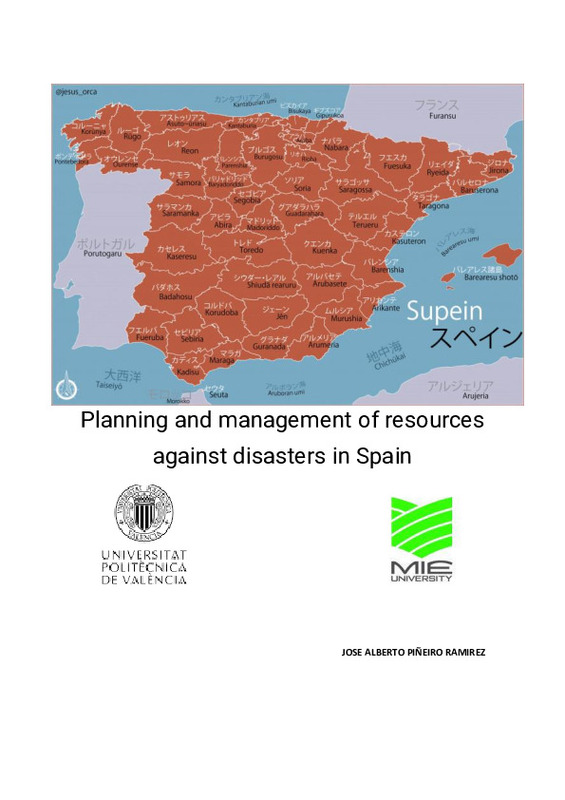JavaScript is disabled for your browser. Some features of this site may not work without it.
Buscar en RiuNet
Listar
Mi cuenta
Estadísticas
Ayuda RiuNet
Admin. UPV
Planning and management of resources against natural disasters
Mostrar el registro completo del ítem
Piñeiro Ramirez, JA. (2022). Planning and management of resources against natural disasters. Universitat Politècnica de València. http://hdl.handle.net/10251/188235
Por favor, use este identificador para citar o enlazar este ítem: http://hdl.handle.net/10251/188235
Ficheros en el ítem
Metadatos del ítem
| Título: | Planning and management of resources against natural disasters | |||
| Otro titulo: |
|
|||
| Autor: | Piñeiro Ramirez, Jose Alberto | |||
| Director(es): | Kondo, Sae | |||
| Entidad UPV: |
|
|||
| Fecha acto/lectura: |
|
|||
| Resumen: |
[ES] El objetivo del TFM es planificar y gestionar las zonas de refugio en caso de que se produzcan desastres naturales en España.
Para ello se procederá a diferenciar las diferentes zonas dentro del territorio español ...[+]
[EN] The objective of the TFM is to plan and manage refuge areas in the event of natural disasters in Spain.
For this, the different areas within the Spanish territory that present a risk of being affected by some type ...[+]
|
|||
| Palabras clave: |
|
|||
| Derechos de uso: | Reserva de todos los derechos | |||
| Editorial: |
|
|||
| Titulación: |
|
|||
| Tipo: |
|
recommendations
Este ítem aparece en la(s) siguiente(s) colección(ones)
-
ETSII - Trabajos académicos [10404]
Escuela Técnica Superior de Ingenieros Industriales







